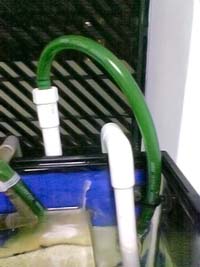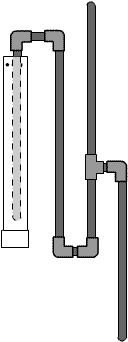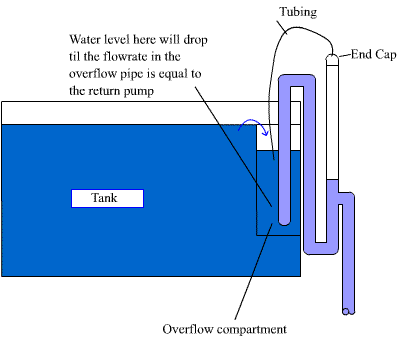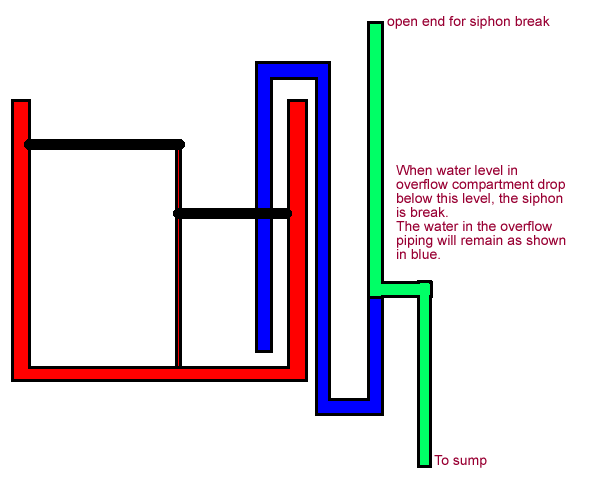
rogersoh
Newbie 1-
Posts
23 -
Joined
-
Last visited
Content Type
Profiles
Forums
Gallery
Everything posted by rogersoh
-
Good with the live sand, live rock and bacteria starter is the first step. You can't rush for marine aquarium. You can now begin cycling the aquarium, please refer to this articles at Cycling - ReefPedia Briefly to do the cycling of the tank for the nitrogen cycling are as follows: 1. Set the new tank up with all its equipment, decorate it to your liking and fill it up. Switch the lights and filters on and leave it running as though there were fish in it. 2. Add some ammonia to the water - this can be something which will produce it such as a piece of meat the size of a thumbnail (example small dead prawn bought from market) . As the meat breaks down it will produce the required ammonia. 3. After about four days test the water for ammonia and nitrite. The results may or may not show any nitrite but keep testing two or three times per week until the nitrite level reaches 15 parts per million. 4. Once this target has been reached stop adding the ammonia (remove any remaining prawn) and just wait. 5. A few days later the ammonia levels will have disappeared but the nitrite will probably hold steady for a time. The time it takes cannot be guessed at because there are to many variables which affect it. I 6. When it has disappeared then the first fish can be added to the tank, 7. Don't add to many or what you have done so far will be wasted. 8. Add the first FEW fish i.e. 4 or 5 small fish.. The newly cycled tank won't be completely stable for the first few weeks so great care must be taken to keep the tank clean and not to over feed the fish. 9. After two weeks or so some more fish can be added and this is how you should proceed for the first 6 months of the tanks life. You can also download the podcast in mp3 format from Talking Reef Podcast the first few episode is very useful for beginner
-
Hi, I have read this article about the coral bleaching at The Coral Whisperer: Bleaching and Tissue Loss in Corals - What's the Difference? by Eric Borneman and another at The science of corals and water flow both from the Advanced Aquarist web site. I quote a paragraph of the articles: Generally when the coral loses their symbiotic algae they will not be as healthy as they can be. I do not have any personal experience in keeping coral but are doing more research and reading about it before I venture into keeping coral. Now I am having Fish only tank. Hope this help.
-
Thanks for the UPS, today I house power supply was shut down for 3 hours for upgrading of the external electical meter works. Luckly I got the UPS, and the electrical supplies to the pumps are not affected.
-
FS 4ft X 1.5 X 2.5 (12mm) Acrylic Tank
rogersoh replied to ryanlio's topic in Sell off/Pasar Malam Shop
Hi ryanlio, Yes I would like to buy it. Can reserved it for me. Please PM me for the arrangement. -
and do you have the manual for the ups?
-
Hi I am interested. Can let me know what is the weight of the unit. I need to check whether I need to ask my friend along to pick it up if it is too heavy. Best regards, Roger
-
This is how I connect the tubing back to the overflow chamber. I am using the big tubing because I got some extra length left. You can change it to normal air line tubing.
-
FS: Grey Pipings 4 2ft tanks..
rogersoh replied to searching4dan's topic in Sell off/Pasar Malam Shop
Hi Searching4dan Sorry this is out of topic, but I notices the overflow pipe shown in your post may not work as the opening is before the siphon of the overflow pipe. IMO the overflow piping system using siphoning method should be done as shown (which is from your previous post in the DIY board) -
Hi Jun It is very difficulties to give estimate on the hole size. I would recommend using the air tube in the hole method in my previous post at http://www.sgreefclub.com/forum/index.php?...ndpost&p=568018 The reason why it is difficult to estimate the size of the hole requires is that we would want the vent tube to be as low pressure as possible (preferly vaccum) but we also want to break the siphon when the return pump fails to operates. If you want to use the hole method I would suggest to use the smallest hole that you can drill maybe less than 1 mm diameter. Then you test whether it can break the siphon when the return pump stop. If not then increase the size of the hole. Using the air tubing method back to the sump is a better alternative as the flowrate will reduce immediately when the water level drop below the tube opening and increase again once it is cover.
-
You will need a overflow compartment. As long the return pump flowrate is lower than the maximum flowrate of the overflow piping system, the water level in the overflow compartmetn will drop until the equivalent is reach. After that the flowrate in and out of the tank will be the same. Hope this answer your question.
-
I also face the same problem as your when I drill a hole or remove the end cap. I solved it by connecting a tubing from the hole to the tank water and to prevent it from siphoning the tank dry I only extend it within 2 cm of the water level. This way the flowrate is not reduced and the overflow can also restart after the return pump failure. This is the win-win solution.
-
Don't understand your question. If you can provide a simple diagram then I would be able to know what will the impact be. Without the diagram I may give the wrong feedback.
-
Don't worry about the overflow causing the sump to flood druing power failure as the top of the pipe will create a siphon break once the water level drop below the top opening level. When the return flow return and water level reach above the outlet the siphon will return and it will function as per normal. It is a good design go for it.
-
Hi I am interested. But now I am oversea and will be back on Saturday morning. Is it ok to collect from you on Sunday evening?
-
Hi, Just like to check more detail first. I suspect it is caused by air binding. Is 2 of the Durso pipings in the overflow connected to a common piping before going to the sump? If yes, is it connect with a Tee joint with the Durso piping connect on the top of the Tee joint of the common piping. As the overflow piping will suck in some air, the velocity of the water in the 1st overflow piping will be high enough to cause the air will flow down thru the overflow piping. But when it reaches the common piping and the changes in the direction, the air will start to flood up, and from the opening of the Tee to the 2nd overflow piping the air will escape up thru there. If you had this problem I will suggest 2 method to solve it. 1. Using seperate piping to connect it to the sump or 2. change the overflows that joint to the common piping to the bottom and to add additional venting pipe for the air to escape out. Please allow sufficient length to prevent overflow. Hope this help
-
Sorry I misunderstood your meaning. Yes I agree that a float switch will prevent the pump from running dry.
-
I understand your concern. Refer to the overpiping diagarm in my previous mail. When there is a power failure, the water level in the overflow partition will drop until it reaches the same level at the Tee joint. That is the level where the blue pipe meets the yellow pipe. At this instance the blue piping will still be filled with water. The siphon break only on the yellow pipe. When the power return, the water level in the overflow partition will start to rise and as long as the water level in the overflow partition is above the level where the blue pipe and yellow pipe meets the water will start to flow thru the overflow piping. So don't worry about the siphon break causing the overflow pipe to fail as this is unlike to happen. You can do an experiment by have the overflow pipe and switch off the return pump to check that it work.
-
Experience sharing low pH in tank
rogersoh replied to rogersoh's topic in New to the Marine Aquaria Hobby
I hope that the sea urchin can recover. The fishes are feeding and seem ok. -
I will go for DSB too. Current my tank size is too small to have an effective DSB. What I planned to do is to have a seperate sump for the DSB. DSB need time to have sufficient of the bacterial to remove the nitrate. Before that I am doing more partial water change between 15 to 20% every week. For effective DSB, it must have sufficient depth about 4 to 6 inch. The water flow must be strong to prevent any debris from settling down and decary in the sand. There is this article in reefcentral How Sandbeds Really work
-
I would like to share my experience of the tank pH level drop to 7.3 pH when I did some modification to my tank. I had added a baffle to allow for an overflow system in my 2' x 1' x 1' tank. Put back the sand, and rock from my existing tank to the new tank and let is run with filtration system for a week. After the tank had stablise, I transfer my fishes (1 Koran Angel, 2 Humbug Damsel and 1 Blue-velvet damsel) + 1 sea urchin ( don't know the species name). 1 to 2 weeks later, the pH level of the tank drop to 7.3 pH, NH4 = 0, NO2 = 0 NO3 between 50 to 100 ppm (not sure the exact value the color of the test shown between 50 & 100 ppm). Note that the tank is operating with 2 external filter only. In the previous tank I had a skimmer operating too, but was damage while I did the modification for my current tank. Panic, I start to add in reef buffer to increase the pH. I try to increase it not more than 0.2 pH per day. But the level still can't reach to 8.3 pH. The sea urchin is now suffering from the stress. Do partial water change (20%) every 3 days. I rush to get a new skimmer, make a quick modification of the other tank to make into a sump, a diy overflow pipe. After connecting up the sump, and skimmer I notice the pH level start to increase until now ( about 5 days) the pH reaches 8.1 pH. IMHO the drop in pH level maybe caused by not enough aeration, led to increase in CO2 level. After I add the protein skimmer there is an increase in the aeration and CO2 is diffuses to the atmosphere thus the acidic of the water reduces and start to go back to normal condition. Hope that the system can manage at that level and my sea urchin can recover from the stress. I had not test the NO2, NO3 level yet as I need to ask my friend to come to my place to help me see the color of the test result. ( I am partial color blind so can't see the color of the test kit well)
-
Yes the red colour is the aquarium. I use this overflow pipe design because I got an existing glass tank without a hole i the tank to connect to the sump. How it work: During normal operation the overflow pipe ( this design is commonly known as Z pipe) is filled with water and the siphon break pipe is empty. When there is a power failure or the sump return pump is switched off the water level in the tank partition (baffle is black colour piece in my diagram). The water level will drop until it is the same level as the "tee" joint between the suction break pipe and the discharge pipe to the sump. The water level in the tank partition is above the opening of the intake of the overflow pipe. Thus the water will be trap in the overflow pipe shown as blue colour in the diagram. When the power supply is back or the sump return pump is switched on the water level of the tank increase and so it the tank partion area. The water level raise above the "tee" joint the siphon effect kick in and the overflow pipe return to normal operating condition. Initial starting of the overflow piping This is the method I used 1. temporary seal the opening of the siphon break pipe. 2. suck the air out using a siphon pump at the discharge end of the overflow pipe. 3. once the water is flowing out, remove the temporary seal of the siphon break pipe. My sump pump is Dolphin P2500 at 1300 litres per hour flowrate at 1.2 meter head, the 3/4" pipe is sufficient. REcommend to use bigger pipe if you want to have much higher flowrate. The flowrate depend on : 1. the height difference between the water level and the "tee" (bigger height difference higher flowrate) 2. the size of the pipe (bigger pipe more flow) 3. the friction loss from the piping and fitting. hope this information help.
-
I found this overflow pipe design in this forum. Attached is the image of the design. I had make the overflow pipe using 3/4 inch pvc pipe and its work perfectly.
-
I am keen to buy the pump seio 820. What is the condition of the pump? How can I collect it from you?




